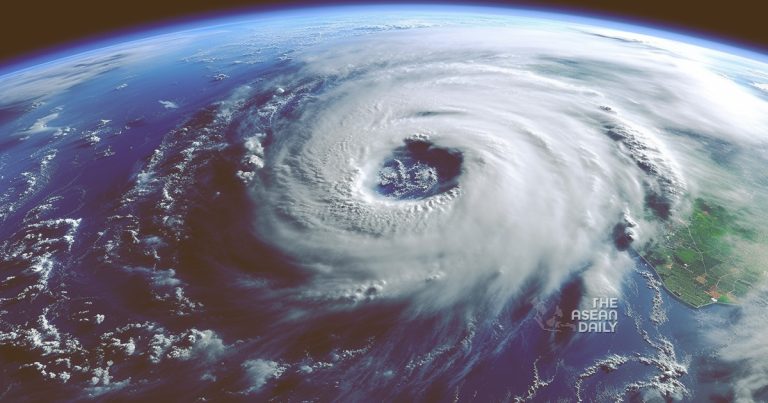2-8-2024 (SINGAPORE) A groundbreaking study conducted by researchers from Nanyang Technological University (NTU) and two American institutes has unveiled alarming projections for typhoon activity in South-East Asia as global temperatures continue to rise. The research, which analysed over 64,000 simulated tropical cyclones, paints a sobering picture of more intense, longer-lasting storms moving northwards and threatening densely populated coastal areas.
Professor Benjamin Horton, director of NTU’s Earth Observatory of Singapore (EOS) and co-author of the study, explained, “As our waters gain more temperature, tropical cyclones are going to start to occur in regions that previously didn’t have them much. The South China Sea is going to get hotter and hotter, leading to more frequent tropical cyclones farther northwards along the China coast and South Korea.”
The study’s findings suggest a significant shift in typhoon formation patterns. While the Western Pacific, particularly the waters east of the Philippines, has traditionally been the breeding ground for most typhoons, future storms are increasingly likely to originate in the South China Sea. This shift could potentially reduce the number of typhoons hitting the Philippines, although the country would not be entirely spared from cyclone activity.
Dr Dhrubajyoti Samanta, senior research fellow at EOS and study co-author, cautioned, “Fewer, but more high-magnitude cyclones can be damaging. Cyclones originating nearby or at the South China Sea can also hit the Philippines.”
One of the most concerning predictions is the increased likelihood of rapid intensification in future typhoons. The warming oceans provide more energy for storms to evolve quickly from tropical storms to Category 4 or 5 typhoons, sometimes within a day. This rapid intensification poses significant challenges for forecasting and evacuation efforts, potentially leaving coastal communities with little time to prepare.
Professor Horton highlighted the dangers of this trend: “This rapid intensification gives less warning to people to evacuate. If it rapidly intensifies to a category three, four or five, do the city planners have the ability to evacuate fast enough?”
The study also predicts that future typhoons will move more slowly over land, potentially causing more devastating damage to infrastructure and communities. Coastal cities such as Bangkok, Yangon, and Hai Phong in Vietnam are likely to bear the brunt of these longer-lasting and more powerful cyclones.
The research team employed nine different climate models to ensure the accuracy of their results, considering both moderate and high carbon emissions scenarios. Their findings were published in the journal Climate and Atmospheric Science in early July.
Looking ahead, the researchers plan to combine their typhoon projections with sea level rise predictions for South-East Asia. This integrated approach aims to provide coastal planners with comprehensive data to better protect cities from the increasing threat of devastating storms.
Professor Kerry Emanuel from the Massachusetts Institute of Technology, who contributed to the study, emphasised the importance of these findings for regional planning: “Tropical cyclones and associated flooding are the most lethal and costly hazards affecting regions bordering the South China Sea and the Bay of Bengal. Any shift in the frequency or intensity of this hazard will have potentially important consequences for this region, and coastal planners would be well advised to plan accordingly.”




